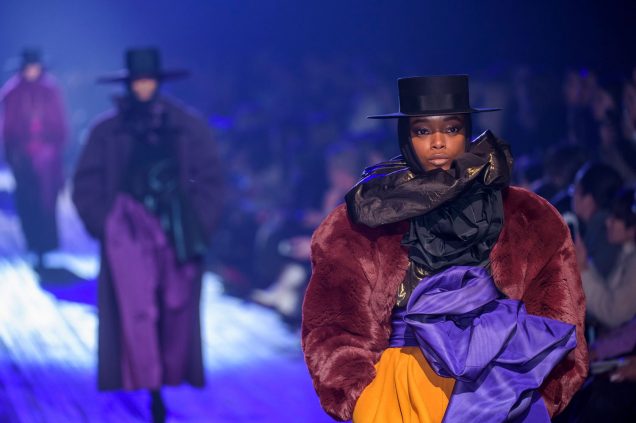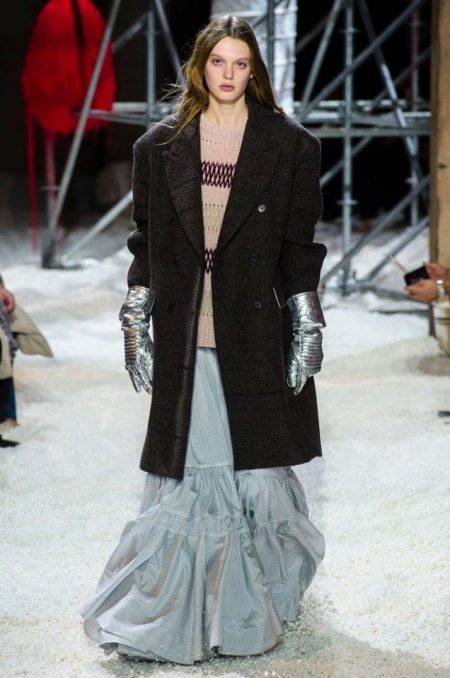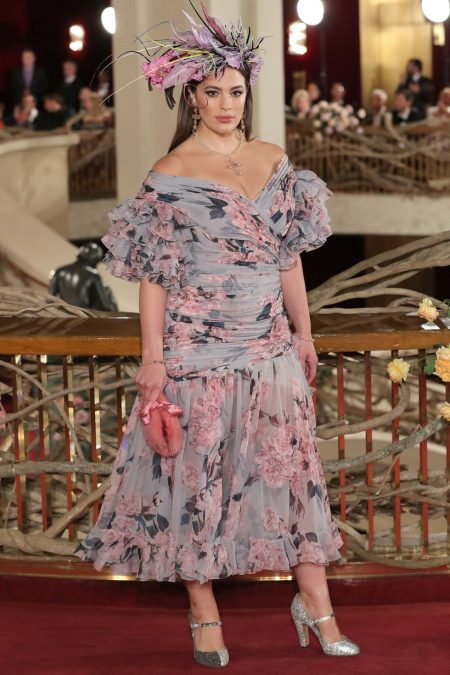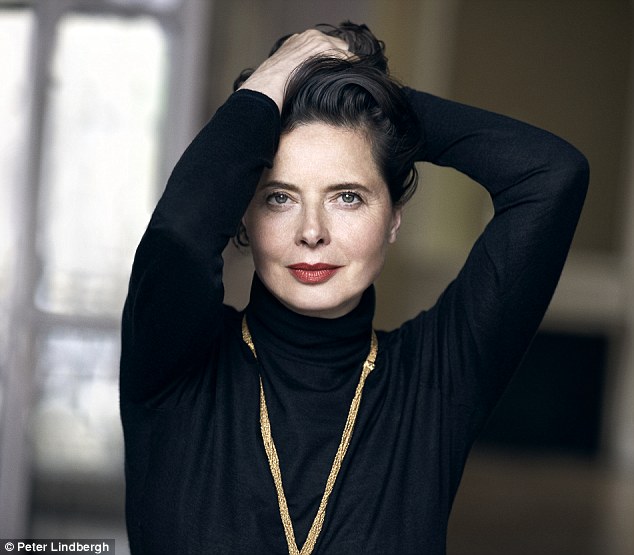Is the Fashion Industry Changing?
While social conditions change, fashion is trying to keep up with them. There’s a lot to be done, but some important moves have already been made.
VOGUE British May 2018 (cover)
The world is changing rapidly, and fashion is one of the sectors that need to adapt and demonstrate determination and consistency. Furthermore, like many other industries, the fashion world is now primarily influenced by social media, particularly Instagram. Thanks to this social media application, the increasing power of the “boy or girl next door” image is taking over. Even supermodels and celebrities seek to look like everyday people.
Since mass media influences the society around us, it would be inconceivable for it not to influence fashion. It seems that the previous limitations of age, size, race, and sex don’t play such an important role in the fashion industry anymore. Perhaps it is beginning to change slowly, but steadily, and accepting the diversity within it. Along with the aid of a few progressive designers who seek the approval of the consumers.
It’s worthwhile observing the last issue of British VOGUE (May 2018). Nine models, each in their own way, presented a different aspect of diversity in fashion. Introducing a bolder future of the industry. Showing that models are human beings encountered in everyday life and not just ethereal beings who could be found only in fairy tales and on catwalks. Finally, fashion is asking for more nonwhite, plus-size, trans, and mature models.

Olivia Anakwe at Marc Jacobs Fall 2018 (thefashionspot.com)
Racial, gender and sexual diversity have become more and more obvious in fashion shows and magazines. According to thefashionspot.com, during the Fall 2018 Fashion Week, more models of color walked the runway than ever before, and since Teddy Quinlivan came out last September, the number of transgender model castings in New York have jumped from 12 to 31.

Ariel Murtagh at Calvin Klein Fall 2018 (thefashionspot.com)

Ashley Graham Dolce&Gabbana AltaModa 2018 (harpersbazaar.com)
In a recent interview for WWD, Tom Ford highlights the fact that models have always been the same as the sample size that designers and fashion houses worked with, and he continued by saying that, “if they don’t fit the clothes, they don’t get the job.” But, the reality is now very far from what the designer states. The last few years have seen a rapid growth of the plus-size market, and the fashion industry knows very well what to do. Ashley Graham, Katy Syme, and Stella Duval are three of the top plus-size models who many luxury brands choose for their shows. Listening to the consumers’ needs is something that should be done by all brands.

IsabellaRossellini (dailymail.co.uk)
At the age of 43, Isabella Rossellini lost her contract with the French luxury cosmetics house, Lancôme, only to regain it at the age of 63. While on the Skavlan Talkshow, Rossellini describes the new female CEO telling her that “Women felt excluded, they felt rejected. And we really want to change the communication and include all women. And define beauty differently than looking young”. In the movie Death Becomes Her (1992), Rossellini plays the mysterious, always-stay-young Lisle Von Rhuman. Her co-stars Meryl Streep and Goldie Hawn do anything to stay forever young and beautiful, but with a price. Is this what every woman desires to be? Forever young or forever herself? But, that’s another article to write. Now, at the age of 60 something, Rossellini looks more accessible to women in her age group. Believe it or not, beauty brands have turned a new page. Through their ads, they are not only promoting beauty, but also the spirit and the confidence a woman should have in order to look and feel beautiful. By hiring women in their mid-50s and 60s as faces of their beauty campaigns, they speak directly to the hearts of women a similar age.
Fashion is an integral part of our everyday life and its reflection. Social conditions and data are changing, and fashion must keep up in order to serve our needs. But, also respond appropriately to key questions that have arisen concerning the fashion industry.
Interview with STORM’S Noelle Doukas And Christopher Yianoullou
Noelle and Christopher have over twenty-five years experience between them, spent working at the forefront of the modeling industry. Both agents exude bright dynamic personalities with an obvious passion for the talent they represent.
We chat about STORM, which has been one of the most influential model agencies since Sarah Doukas, Noelle’s mother, opened its doors in 1987, and move onto the innovations within the market and the changes of their model requirements.
FMD: What are the key attributes that STORM looks for when scouting for models?
Chris: We look for standards like height and beautiful skin and great bone structure, but our industry has started to celebrate the more unique aspects of the girl – who she is and what she’s about; her style, her personality. There is much more to it, and you can’t just scout by looking at someone, you really need to talk to that person and get a feel for who they are. Clients like ASOS and Urban Outfitters want to do more profile pieces, and they want real people, so it makes it more fun for us because [models] don’t have to be strictly 5’10” minimum anymore. It’s more flexible, and more fun; so yeah it’s about character more than anything really.
FMD: Whenever you bring international models into London; what is your process, and does STORM have specific facilities to accommodate them?
Noelle: It all depends on how long you are bringing girls in for, and also what you are bringing them in for. There are some girls we bring in for periods of time, say two to three months; in which case you set them up in a house. We do have model apartments, but we also have a wide range of people who are like second moms who look after them, because it is quite daunting if they have never been into the territory before. Obviously, if it’s a girl who has never been to the UK, we take a bit of time explaining how to get around, because the girls have go-sees or castings every day. They probably have four to five castings a day. So, they kind of hit the ground running really. Sometimes, we try to set them up with other girls so they get a feel for what they are doing. We do have an assistant on board that goes through everything with them, and gives them a UK phone and tries to introduce them to transport etc. London’s enormous isn’t it, so expecting these girls to go to appointment to appointment is really quite daunting.
FMD: Are the castings based in London or all over the UK?
Noelle: They are completely sporadic. With castings, you can’t dictate what time it is, what area it is, so a girl could be coming from E1 and then having to go to SE11 (London postcodes with a distance of five miles) and she’s got a small amount of time to do it. If you get a bigger international girl, say she’s here for three days, it’s easier to put them in a car. They are doing a ton of appointments a day, back to back. I mean, since Uber’s come around it’s changed things quite a bit. It’s not that expensive to Uber from one place to another.
FMD: Uber’s made a model’s life a lot easier.
Noelle: It makes it probably a lot easier. I do feel for them though. I have done go-sees and castings with one girl once, and I thought, “I do feel sorry for them.”
Chris: It’s not as glamorous as you think.
FMD: Describe the London Market and Clientele.
Noelle: Well, I think first of all we’ve got the best editorial, I would say in the world, because we have the high-end publications like Vogue, Harpers, and Elle, and we also have the really kind of cool magazines like Dazed, and Wonderland. Now, there are a lot of online publications, there’s a pop-up magazine every day.
Chris: It’s a super creative city, with all the great designers and fashion schools. The students’ work is incredible here.
Noelle: It’s a good market to develop a girl because, as I’ve said, when we’ve got such a wide range of editorials; it’s good to develop their books. But, I think another great thing about London is that we have the advertising, the catalogues, and the E-com, and so a girl is pretty much guaranteed to make a nice amount of money. I mean the British pound is pretty shocking at the moment, but prior to that, it was great! No, it’s a great city! Our Fashion week is better than it ever has been before. I think a lot more girls are coming to London to do the shows, it’s a lot more relevant. So, I would say London’s definitely kind of an all-rounder. You know the only other thing is there is not as much competition, because most girls base themselves in New York, at which point you’re competing with x amount of girls, as opposed to a less amount of cool, international new faces.
FMD: How easy is it for new models to acclimate to the London Market?
Chris: I think for the younger girls it’s actually quite nice. We’re an English speaking country; the Tube (Underground) is pretty self-explanatory, and the English culture is very polite, and we like to help!
Noelle: They do get chaperoned though, if they are too young. We’d never let a girl under eighteen go out on her own, ever.
Chris: Yeah, and that also helps when they get settled in, there’s an English person there to teach them the ropes, the underground etc., how it works. We’ve never had any problems.
FMD: You mentioned that STORM has model apartments; are there strict rules enforced for the people staying in them?
Noelle: I wish we did, it’s a nightmare! It’s funny, model apartments are generally there for brand new girls, but sometimes girls end up living there for a couple of years. Some girls are actually messier maybe than boys, from what the cleaners tell us. (laugh)
Chris: Yeah, it’s bad! (laugh)
Noelle: It’s not good! It’s not good! I can’t understand it because I think if you can do this to someone else’s house, would you actually do this in your own house? I don’t think they would. Occasionally, we have to get pest control, painters and decorators coming in, or there are doors being broken off hinges or whatever it is. They’re young kids aren’t they; they’re not at home with their parents. I do get girls specifically saying, “I don’t want to stay in a model apartment”. We have a group of really lovely people who rent out rooms, and you know, I think they like it, the international girls who’ve not been here before, they feel kind of nurtured. It’s actually nice to be in a family environment.
FMD: What would you say are the most important qualities models should have?
Noelle: A voice and a personality for sure. I’ve seen the most beautiful girls in the world that have no personality, and I’m not meaning that in a derogative way, I just mean that, I think it’s like dating actually; you can think ‘oh, you’re fairly attractive’, but it’s the connection you have that actually develops how they come across, how you relate to that person – and actually personalities can make or break someone. You meet someone who’s really arrogant and full of themselves, and all that beauty just completely diminishes, whereas someone with a great personality can win you over in a different way, and you see a totally different side of them.
For me, if I were a casting director, it would be that. And it’s interesting to see how [it affects modeling], say you bring in a girl you don’t know particularly well, and she gets 30 options in a month and not one of them confirms, you start to think ‘there’s something not quite right there’, or you can get a girl that you weren’t entirely sure about but she has an amazing personality and her chart is full of red confirmations.
Chris: It’s true though!
FMD: Is there a common mistake that stands out as something models repeat over and over again?
Noelle: I would probably say approaching things with too much negativity.
Chris: Yeah, I was about to say that – or over thinking.
Noelle: When they start to analyze too much, girls can get very down on themselves, and I think that can come across to people. You can get yourself into a hole and it’s difficult to climb back out of it.
But I think it’s like that for everyone, for everything in life. I always write my Gratitudes down every day, things that I’m grateful for. If you try and make yourself feel more positive, then positivity comes back to you. But, I think when you go into anything with a negative view; it’s not going to turn itself around. You’ve got to be strong, and I think you’ve got to have a strong backbone. But saying this, I personally wouldn’t want to be judged on my looks every day of my life. It takes a certain quality of person.
Chris: Yeah, everyone thinks it’s an easy job, but…
Noelle: It’s one of the hardest. The worst thing a girl could ever do is to have a negative view on the industry, or herself, or whatever it is, you know, unless they’re enjoying it, loving it, I try to discourage them doing it at all. Because I think they’re so young, surely in that age group you’re supposed to be having the time of your life, not scrutinizing every part of yourself.
PFW F/W2018. We’ll Always Have Paris.
February 27, 2018
Christian Dior
First, it was the “We should all be feminists” T-shirt, now the “C’est non, non, non et non!” sweater. It’s been 50 years since the student riots in May 1968, and Maria Grazia Chiuri decided to make another social-political statement. Inspired by the tumultuous protesters of 1968 and Diane Vreeland’s “youthquake”, Chiuri wanted to target younger customers but retain Dior’s high-fashion aesthetic and legacy. A wardrobe that is revolutionary but also highly creative.
Saint Laurent
Anthony Vaccarello was inspired by the Yves Saint Laurent’s “Russian Peasant” couture collection of F/W 1976, an extravagant collection in its time. But, Vaccarello gave a more Parisian direction of that elaborated and voluminous collection of Monsieur Saint Laurent. Mini shorts, large brimmed hats, fiercely impressive décolletés and the sparkling Eiffel Tower as a background accessory created a strong, contemporary fashion statement.
February 28, 2018
Maison Margiela
Décortiqué. John Galliano loves to name his collections with French adjectives. In this collection, he stripped down the garments to their essence and just kept their skeletal structure. Unconscious glamour was the collection’s name, but it looked more like ‘Rushed Dressing’ glamour. Coats worn before dresses, blazers before sweaters, holographic coats and a lot of deconstructing garments all over the catwalk. Galliano loves the pair-if-you-dare game of fabrics.
Dries Van Noten
Fashion is good, fashion is nice. It sounds like a mantra but that was the message Dries Van Noten was passing through his collection. We live in a very complicated and wild world, and maybe the Dark Ages are back. But, fashion should reflect the bright side of life. That was what Van Noten’s collection was all about. Utilitarian sportswear, ‘70s glam, and Paul Poiret references. Fashion is good, fashion is nice.
March 1, 2018
Ann Demeulemeester
The dark romanticism of the British poet, William Blake, was what Sébastien Meunier had in mind while creating this strong, aggressive but feminine collection. Clothes for modern amazons. Unfastened leather straps, painted black clothes, but there was also a hint of innocence. Jeanne d’Arc could have been Meunier’s muse for this collection.
March 2, 2018
Loewe
Five classical novels in their native language, with jackets photographed by Steven Meisel, were placed on every chair. “Classicism is always there…sometimes you change the cover and make it relevant for today,” Jonathan Anderson referred to the reading material. Loewe craftsmanship and the meticulously detailed mixing of the fabrics created an updated classic collection.
Balmain
Olivier Rousteing’s “Balmain Army” became fierce disco queens this season. They love wearing ripped jeans with holographic jackets, quilted leather, PVC thigh-high boots, and whatever has a shining effect on the designer’s favorite ‘80s silhouettes.
March 3, 2018
Comme des Garçons
Rei Kawakubo always loves to deconstruct the shape of the clothes and create theatrical figures inspired the history, even if she has stated that she doesn’t like to look back. For this season, CAMP was the name of her collection. She referred to Susan Sontag’s 1964 essay “Notes on Camp”. “I think camp can express something deeper, and give birth to progress,” Kawakubo wrote in her show notes. The progress of thinking and feeling the world around us.
Altuzarra
Joseph Altuzarra designed a collection that was all about the women he grew up with. His mother, his friends, all the women who work and get dressed to go to the office. La Coupole restaurant at Montparnasse was the perfect choice for this real collection to take place.
March 4, 2018
Givenchy
If someone wants to learn about the ‘80s in East and West Germany, Clare Waight Keller’s collection for Givenchy would be the best fashion history class. Rich faux furs, leather, sharp tailoring and lace created the desired contradiction so as to present those two different sides of a country. Glamour and cruelty.
Valentino
“Sometimes it’s felt as if a woman had to dress like men to be more powerful. Today is a different moment. People can be exactly how they are,” said Pierpaolo Piccioli. Flowers, the symbol of romance, were the collection’s main theme. Flowers that were a reminder of Georgia O’ Keefe paintings but much more minimal. Long dresses, coats, jackets; everything a romantic Valentino woman would wear.
March 5, 2018
Alexander McQueen
A McQueen woman is always powerful, and so was Sarah Burton’s show. Metamorphosis was the name of the collection, and it was an ode to powerful womanhood. Like a caterpillar transforms into a beautiful and ethereal butterfly, so does a girl become a mighty woman. Undoubtedly, throughout the collection butterfly wings had a special place.
Giambattista Valli
“Humanity, much less politics,” Giambattista Valli said backstage. Valli’s collection was a collision between different cultures and politics where everyone accepts each other as they are. A journey through different countries, unique civilizations and unlike mentalities, but with bohemian attitude.
March 6, 2018
Chanel
Karl Lagerfeld always narrates a personal story through each of his shows, and he did so again this time. Twelve old alleys decorated the runway, at Grand Palais, along with a German forest that is usually spotted somewhere in north Hamburg, a memory from Lagerfeld’s childhood. Everything that one needed for a stylish walk into the woods was in the collection.
The #CHANELFallWinter 2018/19 show, presented by Karl Lagerfeld yesterday in Paris. #PFW
A post shared by CHANEL (@chanelofficial) on
Miu Miu
Miu Miu is about girls who love to have fun with fashion. This time, Miuccia Prada mixed the ‘50s and ‘80s and the outcome was an eccentric and colorful collection. Different types of models, but all were referring to strong personalities. One thing in common… they all love the ‘80s powerful dress code.

